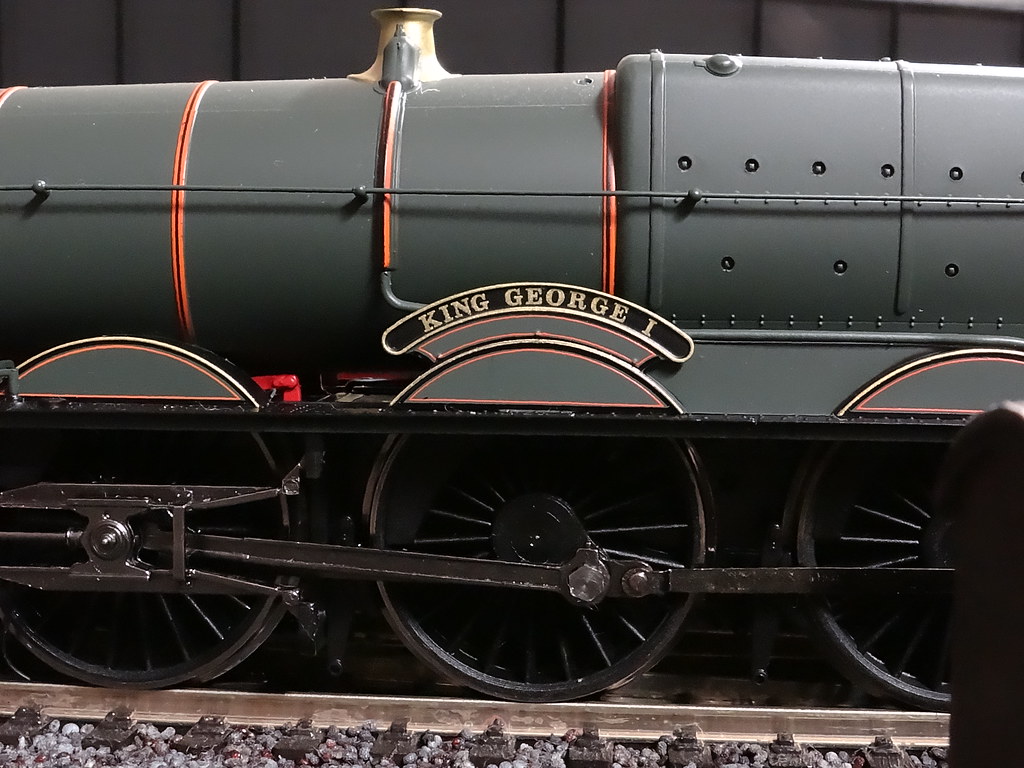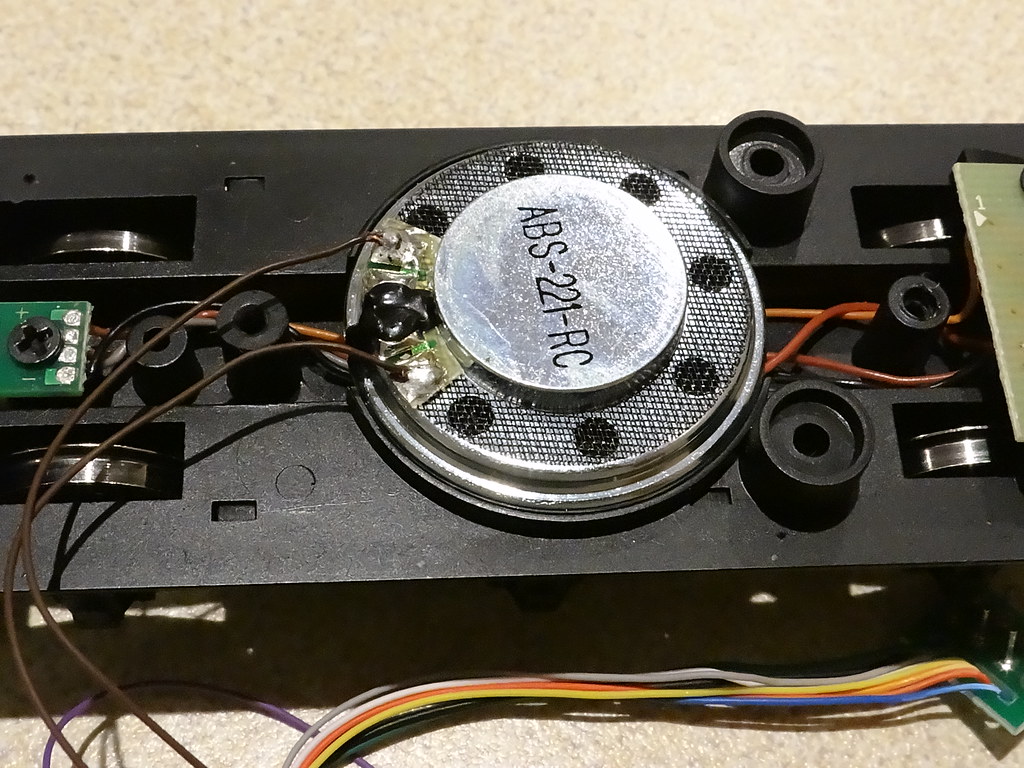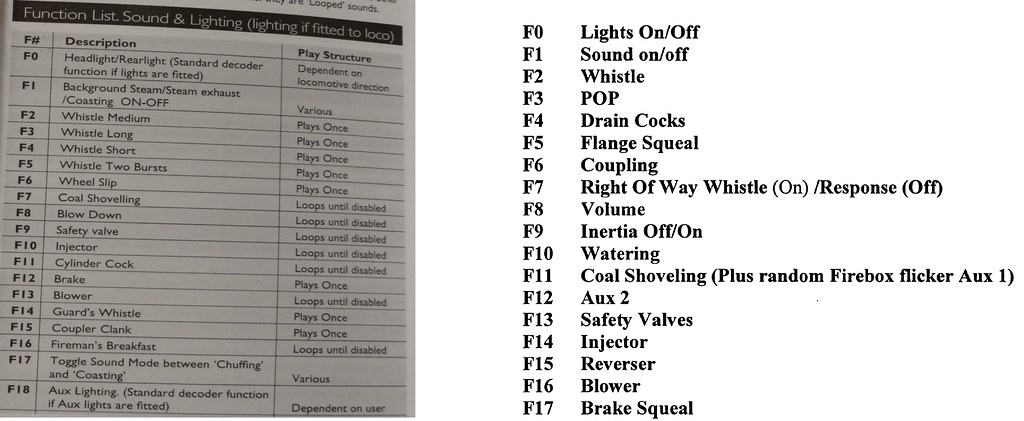A sound choice – Hornby King on analogue DC
My last post dealt with Hornby’s latest King George I engine and I finished with the question, what about some sound on DC?
The Hornby TTS digital chip allows running on both digital and analogue DC layouts but does not provide sound on analogue DC. At the time of my last Post I had removed the Hornby TTS chip and speaker and was running the engine on analogue DC with an eight pin blanking plate.

Hornby King George I
King George was purchased at a discount and now I have felt able to invest in a digital sound chip that will produce sound on analogue DC. A LokSound Micro chip was purchased from Coastal DCC loaded with their own Sound Project for a King.
My previous Blog Post concerned the running qualities of Hornby’s latest King George I. The current Post covers the operation of the King fitted with a LokSound Micro digital sound decoder.

Hornby King George I – replacement LokSound Micro
The 28mm speaker supplied by Coastal DCC had a slightly different geometry to the original Hornby speaker.

Hornby King George I – replacement speaker
I had to add some black card packing to the Hornby Clamp to ensure that the new speaker was held firmly down against the tender underframe.

Hornby King George I – card packing added to speaker clamp
As purchased King George was fitted with Hornby’s TTS (twin track sound) system. For comparison I show the various 'sounds' that are available using the function 'buttons' for the two chips.

Function Sounds Hornby TTS left, Coastal DCC right
I have loaded a video to YouTube with the Hornby King as bought running on my programming track coupled to a SPROG II controlled by my Sony Vaio laptop (upgraded from Windows 7 to Windows 10). I have run through the different TTS sounds that are provided by Hornby.
For comparison I have also loaded a second video of the engine on my programming track but this time fitted with the LokSound Micro and the Coastal DCC sound project.
How does the King work on DC? I think quite well. Out of the box so to speak it ran up and down the track and made appropriate chuffing noises. However top speed was decidedly limited and more seriously it was not able to haul a rake of coaches up my 1 in 60 inclines. I did wonder whether the LokSound Micro was able to deliver enough power for the King. Kevin at Coastal DC was reassuring and suggested that I turn my attention to the DC analogue settings, CV125 (start voltage) and CV 126 (voltage for maximum speed in analogue mode).

6006 LokSound Micro Analogue Controls
As supplied by Coastal DCC the LokSound Micro came with values for CVs 125 and 126 of 90 and 130 respectively. After much to –ing and fro-ing between layout and my SPROG programming track I arrived at values of 70 and 115 which I thought more suitable for my layout (and mains voltage) conditions.
How does the King sound? ESU supply a small 4 ohm speaker with their LokSound Micro, ideally I guess for use in N gauge locomotives. In its place Coastal DCC supplied a 28 mm diameter 8 ohm speaker (with a paper cone as opposed to the original Hornby plastic cone). The documentation with the LokSound Micro indicates a preference for a 4 ohm speaker. However the ESU literature also confirms that the 8 ohm is useable.
The perceived wisdom is that the volume of sound will be lower with the higher resistance 8 ohm speaker. I have to say that this doesn’t seem to be an issue and I have posted a couple of videos of my LokSound Micro King in action on my layout.
The first video was recorded using my Sony digital camera:
The second was recorded with a Branor Systems Camtruck pushed in front of the King running tender first.
For comparison I have also posted another Camtruck video this time using the Bachmann Patriot. Can you tell the difference between the four cylinder King and the three cylinder patriot?
Over the last twelve months I have dabbled with digital sound. I have acquired a number of sound fitted diesels and am impressed with the variations in sound from the different types. Bachmann Royal Signals and the Hornby’s King George were purchased to try out digital steam sounds. From this limited experience I am not as impressed with the digital steam sounds as I am with the diesel noises. Yes – you can differentiate between the three cylinder and four cylinder engines but I think there is a lot missing. Prior to buying these digital sound locomotives I had misgivings about the sound reproduction qualities from tiny 25 and 30mm speakers. Twelve months later I am still not convinced that the bass sounds that are so characteristic of the prototype engines are being reproduced correctly. For the price of two or three digital sound chips you could purchase quite a decent static sound system. Just a thought and you wouldn’t need to sound fit all your locomotives and you could carry on using analogue DC.
-
 1
1


.thumb.jpg.60c53fcbcaa34017b05b8919d1a9e6d2.jpg)

6 Comments
Recommended Comments
Create an account or sign in to comment
You need to be a member in order to leave a comment
Create an account
Sign up for a new account in our community. It's easy!
Register a new accountSign in
Already have an account? Sign in here.
Sign In Now